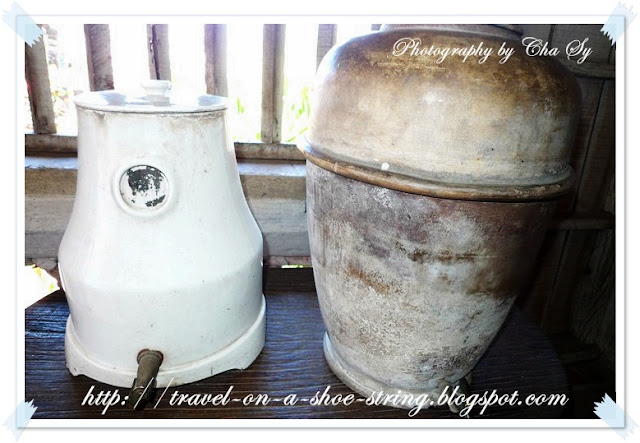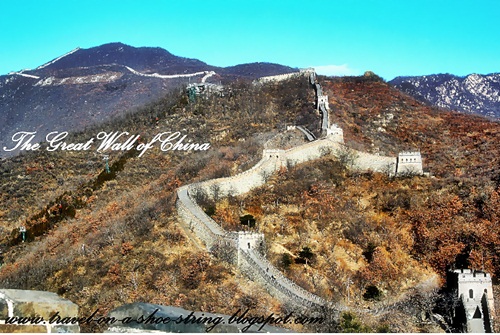VIGAN KALESA TOUR PART THREE- FR. BURGOS MUSEUM
 Our next kalesa stop is the nearby Padre Burgos Museum. Entrance fee is ten (Php 10) pesos. The museum is managed by staff from the National Museum. You can either explore the artifacts yourself or have a guide join you free of charge.
Our next kalesa stop is the nearby Padre Burgos Museum. Entrance fee is ten (Php 10) pesos. The museum is managed by staff from the National Museum. You can either explore the artifacts yourself or have a guide join you free of charge.
The Burgos Museum is open the entire week except for Mondays and holidays. Museum hours are from 8:30 a.m. to 11:30a.m. and 1:30 p.m. to 4:30 p.m.
Fr. Burgos Museum in Vigan, Ilocos Sur is a two-storey ancestral house of the martyr-priest Padre Jose Burgos. The house was built in 1788 and owned by his grandparents Don Juan Gonzales and Doña Florentina Gascon. Despite the limited funds of the city, the museum has maintained its 19th century interior and its well-preserved kitchen.
 Antique collections and dioramas of local historical events can be found here along with a hall of fame for the Ilocano heroes and achievers.
Antique collections and dioramas of local historical events can be found here along with a hall of fame for the Ilocano heroes and achievers.
 Earthen Jars from yesteryears.
Earthen Jars from yesteryears.  This is their rain gears! The ever reliable salakot and rain coat with gasera.
This is their rain gears! The ever reliable salakot and rain coat with gasera.
 Fr. Jose Burgos museum contains his memorabilia along with an excellent collection of archaeological and ethnological finds such as a series of paintings dating back to Basi Revolt and records of the native reactions to colonialism.
Fr. Jose Burgos museum contains his memorabilia along with an excellent collection of archaeological and ethnological finds such as a series of paintings dating back to Basi Revolt and records of the native reactions to colonialism.
 The hot and cold water dispenser of Fr. Jose Burgos' Family
The hot and cold water dispenser of Fr. Jose Burgos' Family

This is the flat iron during Fr. Jose Burgos time. It was my first time to see a round flat iron like this:-)
Where to stay?
There are numerous options for accommodation in Vigan. Prices are very reasonable, typically around P 2500 pesos for a descent accommodations. Cheaper accommodation is available. The Villa Angela Heritage Hotel offers a good antique feel, but there are numerous quality options.
How to get there?
By plane via PAL. Upon landing in Laoag City visit Fort Ilocandia and enjoy the swimming pool and amenities they offer. Take a bus or hire a vehicle to take you to Vigan city which is about two (2) hours away.
By bus from Manila (about 8 hours).
Partas Transportation Co. Inc., located at #816 Aurora Boulevard, corner Arayat, Cubao, Quezon City. Buses leave Manila every hour.
Air-conditioned Bus Fare is P600. For more info call 724-98-20/ 725-17-40.
Other buses
Tip: Go to San Fernando, La Union first and enjoy the San Juan Surf Beach then get a bus to Vigan which takes 2-3 hours. Ask a local as to where the bus station is located.
How many days should I stay?
Overnight if you arrive early is sufficient to see most of the sights.
Tips and Comments

The Burgos Museum is open the entire week except for Mondays and holidays. Museum hours are from 8:30 a.m. to 11:30a.m. and 1:30 p.m. to 4:30 p.m.
Fr. Burgos Museum in Vigan, Ilocos Sur is a two-storey ancestral house of the martyr-priest Padre Jose Burgos. The house was built in 1788 and owned by his grandparents Don Juan Gonzales and Doña Florentina Gascon. Despite the limited funds of the city, the museum has maintained its 19th century interior and its well-preserved kitchen.

 Earthen Jars from yesteryears.
Earthen Jars from yesteryears. 

 The hot and cold water dispenser of Fr. Jose Burgos' Family
The hot and cold water dispenser of Fr. Jose Burgos' Family 
This is the flat iron during Fr. Jose Burgos time. It was my first time to see a round flat iron like this:-)
Where to stay?
There are numerous options for accommodation in Vigan. Prices are very reasonable, typically around P 2500 pesos for a descent accommodations. Cheaper accommodation is available. The Villa Angela Heritage Hotel offers a good antique feel, but there are numerous quality options.
How to get there?
By plane via PAL. Upon landing in Laoag City visit Fort Ilocandia and enjoy the swimming pool and amenities they offer. Take a bus or hire a vehicle to take you to Vigan city which is about two (2) hours away.
By bus from Manila (about 8 hours).
Partas Transportation Co. Inc., located at #816 Aurora Boulevard, corner Arayat, Cubao, Quezon City. Buses leave Manila every hour.
Air-conditioned Bus Fare is P600. For more info call 724-98-20/ 725-17-40.
Other buses
Tip: Go to San Fernando, La Union first and enjoy the San Juan Surf Beach then get a bus to Vigan which takes 2-3 hours. Ask a local as to where the bus station is located.
How many days should I stay?
Overnight if you arrive early is sufficient to see most of the sights.
Tips and Comments
- Bagnet is delicious in Vigan.
- Buy at the local market it is cheaper there!
- I personally like the design of the shirts at Casa Rica.
- You could haggle with the kutchero so don't be afraid to make tawad hindi tuwad ha ha ha! Joke!


















